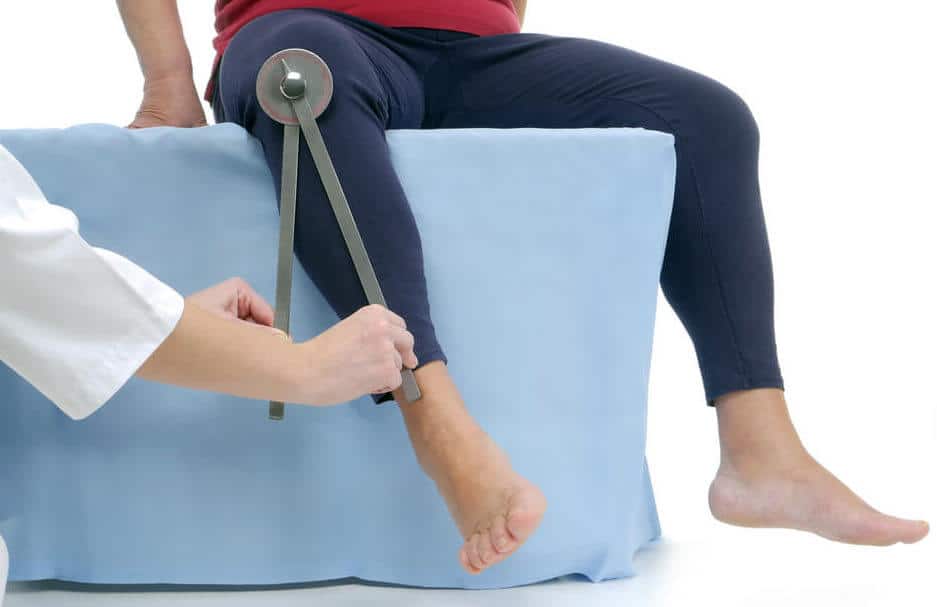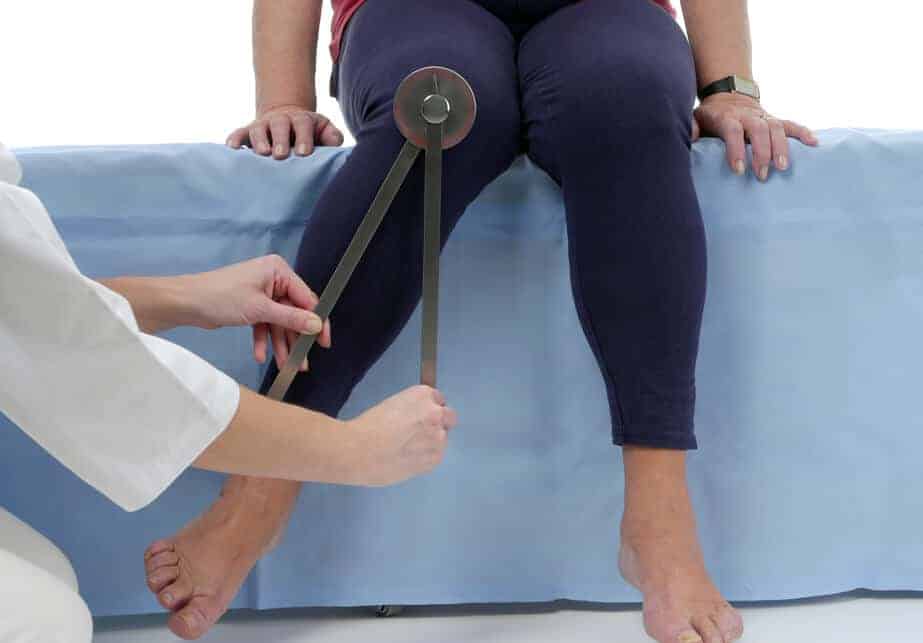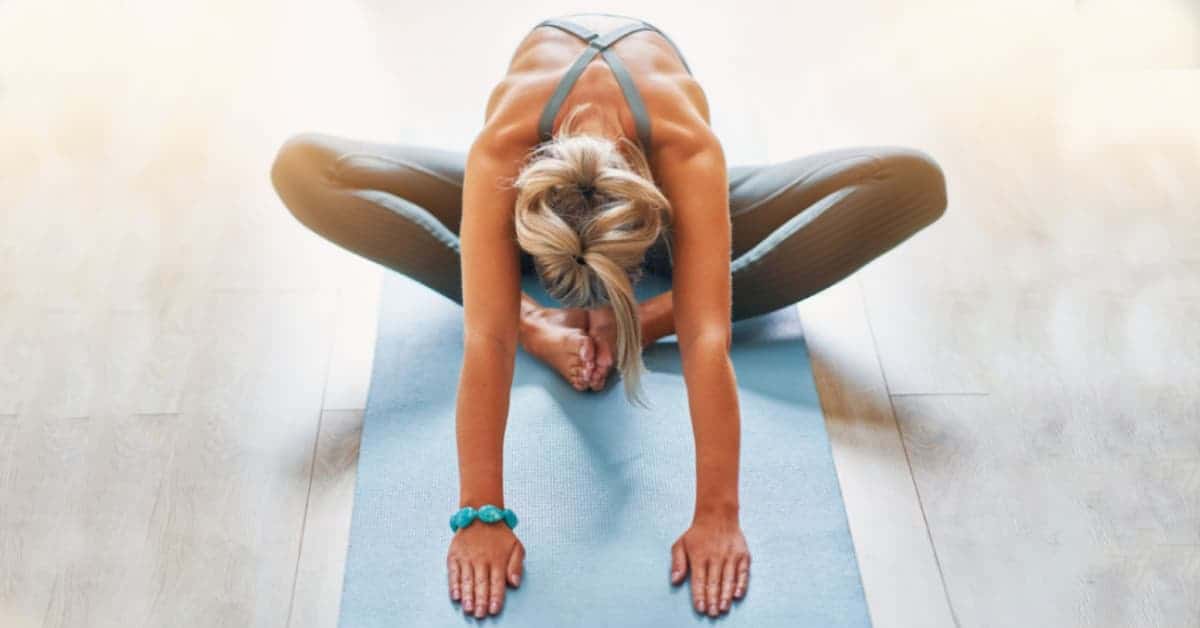Hip external rotation is integral to our daily movements, often operating behind the scenes as we go about our routines. Whether it’s pivoting to grab something behind us, or the simple act of crossing our legs, hip external rotation is at work.
It’s a vital aspect of our mobility, especially for those with sedentary lifestyles. In this article, we aim to break down the concept of hip external rotation, explore its significance, and provide practical ways to enhance it.
I. Understanding Hip External Rotation
Hip external rotation is the outward rotation of your thigh away from the centre of your body. Try this: lift your right foot off the ground while sitting and rotate your knee outward without moving your hip or tilting your body. This action is hip external rotation.

The primary muscles at work during hip external rotation include the piriformis, gemellus superior and inferior, obturator internus and externus, and the quadratus femoris, otherwise known as the lateral rotators of the hip [1]. These muscles are part of the deep glutes, operating together to facilitate hip rotation.

It’s crucial to distinguish between hip external rotation and internal rotation. In internal rotation, the knee turns inward towards the opposite knee. While both are important, they serve different purposes and involve different muscle groups.
II. The Role of Hip External Rotation in Daily Life and Fitness
Hip external rotation is pivotal in our daily lives, contributing to walking, running, and climbing stairs. It’s central to maintaining balance and stability, underpinning our daily movements.
Moreover, good hip external rotation can prevent potential injuries. Insufficient mobility can lead to problems such as lower back pain and knee injuries, especially for those leading sedentary lives. Enhancing your hip external rotation can improve overall well-being and make day-to-day activities more efficient.
In the forthcoming sections, we’ll explore stretches and exercises designed to improve hip external rotation. Regardless of your exercise experience or schedule, these are simple, practical movements you can incorporate into your routine. Stay with us as we delve deeper into unlocking the full potential of your hip mobility.
III. Stretches to Improve Hip External Rotation
Regular, targeted stretching can significantly improve your hip external rotation. Here are some effective stretches you can incorporate into your routine:
External rotation stretch
- Sit straight on a bench, table, or another stable flat surface.
- Place one leg in an externally rotated position on the surface, with your ankle resting on it.
- Gently apply pressure to the outside of your knee using your hand, pushing it down towards the surface.
- Hold this position for at least 30 seconds, feeling the stretch in your outer hip.
- Release the tension and repeat the stretch for a few more sets.
- Switch legs and repeat the stretch on the other side.
Lying figure 4 stretch
- Begin by lying flat on your back on a comfortable surface.
- Bend your knees, keeping your feet flat on the floor.
- Cross your right ankle over your left knee, forming a “4” shape with your legs.
- Gently pull your left thigh towards your chest, keeping your back flat on the floor.
- Hold this position for at least 30 seconds, feeling a stretch in your right hip.
- Release and switch legs, repeating the stretch on the other side.
Pigeon pose
- Start in a tabletop position on your hands and knees.
- Bring your right knee forward, placing it behind your right wrist.
- Extend your left leg behind you, keeping your knee straight.
- Lower your hips towards the floor, feeling a stretch in your right hip.
- Hold this position for at least 30 seconds.
- Release and switch legs, repeating the pose on the other side.
90.90 hip stretch
- Sit on the floor and position your legs at a 90-degree angle, one in front of you and the other behind you.
- Keep your chest upright and your hands on the floor for support.
- Lean forward slightly, feeling a stretch in the hip of your front leg.
- Hold this position for at least 30 seconds.
- Switch your legs and repeat the stretch on the other side.
Weighted butterfly stretch
- Sit on the floor and bring the soles of your feet together, letting your knees drop out to the sides.
- Hold a small weight in each hand and place them on your thighs.
- Gently press down on your thighs with the weights, deepening the stretch in your hips.
- Hold this position for at least 30 seconds.
- Release the weights and shake out your legs before repeating the stretch.
IV. Exercises to Strengthen Hip External Rotators
Strength exercises specifically targeting the hip external rotators are beneficial for enhancing hip mobility. Here are some that you can incorporate into your routine:
Side-lying hip external rotations
- Lie on your side with legs bent at 90 degrees, bottom leg in front and top leg behind.
- Rest your head on your bottom arm and place the other hand on the floor.
- Rotate your bottom leg upward, aiming the instep of your foot towards the ceiling.
- Hold for a few seconds, then return to the starting position.
- Repeat for several repetitions, then switch sides.
Facedown hip external rotation
- Lie face down, arms folded in front with your head resting on them.
- Bend your right leg to 90 degrees, foot resting on the outstretched left leg.
- Lift your bent right leg off the ground, aiming your knee and thigh upwards while keeping your foot relaxed.
- Lower your leg slowly, then repeat for the desired number of repetitions.
- Repeat the exercise with your left leg.
Fire hydrants
- Start on all fours, hands under shoulders and knees under hips.
- Keeping your knee bent at a 90-degree angle, lift your right leg out to the side.
- Lower your leg back to the starting position.
- Repeat for the desired number of repetitions, then switch to the left leg.
Clamshells
- Lie on your side with legs stacked and knees bent at a 45-degree angle.
- Keeping feet together, raise your top knee as high as you can without shifting your hips or pelvis.
- Lower your knee back down.
- Repeat for the desired number of repetitions, then switch sides.
V. Incorporating These Movements into Your Routine
Now that you’ve learned the stretches and exercises, the next step is to incorporate them into your daily or weekly routine. Consistency is key for improving hip mobility, so aim to perform these movements regularly.
Start with a few minutes each day, gradually increasing the time as your flexibility and strength improve. It may be beneficial to start and end your day with these movements, turning them into a part of your morning and evening routines.
Remember to listen to your body. If a stretch or exercise causes pain, stop and adjust your form or reduce the intensity. It’s better to perform the movements correctly with less intensity than to risk injury.
Wrapping Up Your Hip Mobility Journey
Improving hip external rotation might seem like a small change, but it can significantly impact your mobility and daily comfort. Incorporating these exercises and stretches into your routine can ease discomfort, especially those often linked to sedentary lifestyles, like hip and lower back pain.
Remember, improvements take time and consistent effort, so patience is key. Celebrate small victories along the way and with time, you’ll likely notice noticeable progress in your hip mobility and comfort during everyday activities.









